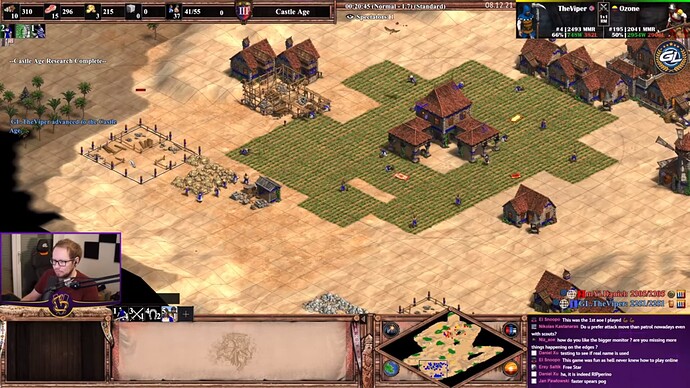550 wood is an enormous cost for early castle age for when you want to use it.
I don’t, but I also think that Portuguese aren’t that reliant on food. The only issue with any feudal age feitoria I see is the food production rate, which will enable you to quickly go to castle, while not investing as much in farms.
I more of see it as a, feitorias being used as a midgame building, which at the later stages might get deleted in favor of villagers.
Due to certain limitations with aoe2 design, we can’t make build limits for buildings (except TCs, they make sense), and neither can we make a “villager cap” for the Portuguese. Therefore a clear function like the Dutch in aoe3 is not possible.
Still, I do believe that there is a place for such mechanics in aoe2, seeing the more liberal approach the devs have recently taken with civ design, including straight up borrowing from aoe2’s not so loved, but still widely respected younger brother.
Sure, except if I actually want to go on the aggressive I won’t be making feitorias because I need an university and ballistics, or cav armor and husbandry, or thumb ring and a forward siege.
The concept of investing resources for a small marginal gain that will get erased in 15 minutes is a bad idea.
I don’t know exact timings, but from a random recent video from The Viper:
He hits castle with 37 vils at about the 21 minute mark (not too slow, not too fast for the top level, with moderate feudal investment) and immediately places 2 more TCs. They will have paid off at minute 29, with your calculation. Now, the thing is, villager eco is good long term. Therefore this is the eco setup that he wants more and more as the game goes longer, that’s why he is investing in it.
If he was to build feitorias which will get obsolete by the time they hit imp, at about the 40 minute mark, they will have paid themselves off, but now he has to think again about going for yet another boom, this time with villagers.
Point I’m making here is, if you are going to invest in something, you will always want to invest in the long term option. Which is villagers in the castle age. In feudal and in imp feitorias actually make sense because A. there is no eco advantage for the Ports in feudal and B. in imp they can be used to outlast your opponent. When there is a better and more sustainable economic option in the castle age, nobody would build feitorias still.
Except recently I have seen Cumans go for a second TC at the competitive level once, compared to when we saw them in redbull with the scouts into archery ranges strat that was executed a dozen times.
And in team games the Cuman boom is just as good as any other boom- whether Cumans go for eco in their own unique way, or Poles go for it in their way is exactly the same concept-wise. Except you are getting annoyed because it’s not the generic 3tc that we see every single time.
Mind you, the feudal rams are much more annoying in TG (arena/bf/hideout) than the 2tc boom.
The point of exactly Chinese and Mayans is that their eco is so strong they can do literally anything in the game. With the eco they have, if Mayans had redemption they could go xolotl warriors and still win the game for all I know.
Cumans on the other hand are more versatile since the -75 wood. And it’s good. And Ports wouldn’t lose any options with FC organs still being on the table, drush FC xbow, fast imps, everything really. In fact, they would have more options if they had a feudal feitoria.
It’s what I said too. Feitorias earlier in the game will positively impact game balance and diversity, which, at the end of the day, we all want.
Annoyingly strong because of how good organ guns are on arena as an immobile unit that counters siege and knights too.
But if Ports could do anything besides that, if they had the eco for it with feitorias, we could nerf organ guns in the castle age and see a positive development for the variety of strategies they have. And games would become more interesting too.
A feudal age feitoria is more relevant to castle age all ins than a castle age feitoria is. By that time a feudal one will have paid off and will be a net benefit to your economy, which is exactly what you want with all ins.
But that would require feitoria being available in the feudal age, no? It’s the same as cumans building their TC on the way to castle. Cuman TCs take 275 seconds to build until they reach castle age though, and reaching castle age takes 160 seconds. So not all that relevant, considering you won’t even have your TC up by then unless you put 5 vils on it. And feitorias take 120 seconds to build (I think with feudal age feitorias this should stay, so they take longer to pay off), which still is quite a lot.
